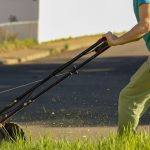Across northern and central Syria this week, families who’ve been torn apart by more than a decade of civil war have been holding joyous reunions.
“I didn’t believe it, it was very emotional,” said Ismail Alabullah, a volunteer with the Syrian NGO the White Helmets, as he described returning to the city of Aleppo for the first time since 2013 and reuniting with his sister.
“I couldn’t believe I was seeing her again,” he told CBC News from northern Syria. “I lost my brother, my mother and father over the past two years — I couldn’t say goodbye to any of them. Now, it’s just me and my sister.”
The White Helmets, a first responders’ group best-known for rescuing and evacuating civilians from active war zones, are considered arch enemies of the regime of President Bashar al-Assad.
Since 2016, Assad’s forces have controlled Aleppo. But with his army now retreating from territory where just days ago it seemed to be firmly in charge, families stranded on opposite sides of the front lines are able to be together again.
Dynamic situation
After years of stalemate, Syria’s map of control is being redrawn almost by the hour.
First, Aleppo — a city of more than 2.3 million people and the second-largest in the country — fell to opposition forces on Nov. 27. In the days that followed, so did many towns to the south.
On Thursday, Assad’s forces abandoned the strategic centre of Hama when rebel forces pushed in.
Most observers expect an assault on a key Assad power base — the city of Homs, 40 kilometres to the south of Hama — is only hours away.
If opposition forces are successful, the move would cut off Assad’s strongholds along the Syrian coast from the capital, Damascus.
“It’s clear that the regime itself cannot defend these territories,” said Haid Haid, a Syria analyst with Chatham House, a London-based think-tank.
Colin P. Clarke, director of research at The Soufan Group, explains what’s happening in Syria and why the long-running conflict is flaring up again.
This conclusion leads to inevitable speculation over whether Assad’s government may be hurtling faster than almost anyone expected toward its demise, after surviving years of intense fighting in a civil war.
“No one can give any absolute answers,” Haid told CBC News from Istanbul. “I think it’s safe to say that Assad is not 100 per cent secure, but no one knows when and if the regime will collapse completely.”
Political dynasty
Assad and his family have ruled Syria with an iron fist for more than 50 years. Since he took over as president in 2000 after his father’s death, the UN says Assad’s forces have killed more than 350,000 opponents, jailed and tortured countless thousands more and used banned nerve gas on opposition towns to deter any challengers to his rule.
In 2011, Syria was rocked by anti-Assad protests, inspired by anti-regime demonstrations across the wider region, known as the Arab Spring.
Assad responded with a violent crackdown that evolved into a full-scale civil war. By 2015, opposition groups — and forces of the Islamic State (IS) — had seized vast swaths of the country. But intervention from Russia turned the tide.
A devastating aerial bombing campaign by Vladimir Putin’s forces secured Assad’s position, but at a horrendous cost. Humanitarian groups accused Russia and Syria of war crimes for indiscriminately bombing civilians using cluster munitions.
After a concerted effort led by the Kurdish Syrian Democratic Forces in the east — and with help from Russia — IS was eventually pushed back into a few pockets in the desert.
Since 2016, the battle lines of the conflict have remained largely in stasis, with Assad’s Syrian Arab Army (SAA) in control of most of the country’s major cities.
Major successes
In Idlib province, next to Turkey, forces belonging to a one-time al-Qaeda spinoff, Hayat Tahrir al-Sham (HTS), have controlled most of the territory. And the group has spearheaded most of the battlefield successes over the past 10 days.
Hayat Tahrir al-Sham has been listed as a terrorist entity by Canada since 2013. But more recently, its 42-year-old leader, Abu Muhammed al-Jolani, has disavowed any connection with the group or its radical ideology.
In a social media post on Thursday, HTS unusually referred to him by his given name — Ahmad al-Shara — rather than al-Jolani, which he uses in military settings. This appeared to showcase him as a statesman or politician rather than the leader of a banned militia.
Al-Jolani also gave a rare interview to a Western media outlet, telling CNN his goal is to overthrow Assad’s regime and replace it with a new government for all Syrians.
The Institute for the Study of War, a U.S.-based think-tank that studies global conflict zones, noted that a major reason HTS has gained territory so rapidly has been its willingness to negotiate deals with local communities to avoid fighting.
ISW said two majority-Christian towns and one largely Shia city had all come to agreements with HTS, allowing the group’s fighters to avoid costly combat in rural areas.
Longtime Syria watcher Charles Lister, who publishes a weekly newsletter on the Syrian conflict, has written that HTS has built a formidable diplomatic presence beyond its base in Idlib province, by engaging with local Syrian tribes and other social bodies to improve the group’s outreach.
Lister says as a result, there have been few clashes with other Syrian opposition groups — particularly the powerful Kurds — as HTS’s forces have moved rapidly through the countryside.
Finally, Lister says al-Jolani has attempted to “replicate a sovereign government” in Idlib province, with HTS issuing ID cards, administering the banking system and taking on many of the functions usually performed by municipalities.
Nonetheless, HTS’s listing as a terror entity has put NGOs and Western governments in a challenging position, with most unwilling to directly help the group, resulting in a worsening humanitarian situation in places such as Aleppo.
Ismail Alabduallah, the White Helmet worker, told CBC News the city is already seeing food shortages.
“The situation is very difficult. Some NGOs we co-ordinate with have this responsibility, and now no one is distributing bread every day in Aleppo,” he said. “They are working to make the bakeries operate again as before.”
Foreign actors
With the city of Homs, another key power base for Assad, just a half-hour drive away from advancing HTS forces, the key question is whether any of the regime’s allies will intervene militarily to stop the latest opposition push.
The Iranian government has reportedly ordered some of the militias it controls in neighbouring Iraq to cross the border to help its ally Assad. But their presence on the battlefield has yet to be felt.
Hezbollah chief Naim Qassem said Thursday that his group will help Assad, and there reports that what the group calls “supervising forces” arrived in Syria overnight.
Until recently, Iran-backed Hezbollah was arguably the most powerful militia in the Middle East. But Israeli assassinations of its top leadership and an immense aerial campaign against its fighters in southern Lebanon have severely weakened the group.
One neighbour Assad won’t be able to count on is Turkey. Its government has been a major supplier of weapons and money to several opposition groups, and on Friday, President Recep Tayyip Erdogan said he hopes the Syrian opposition forces continue to make gains.
That leaves Vladimir Putin, who most observers credit with saving Assad the last time opposition forces encroached in 2016.
“It’s not clear where Moscow is heading or what its main priority is at this point,” said Chatham House’s Haid Haid.
Russian bombing of the Aleppo area and of the key approaches to Homs has resumed in recent days, but with Putin’s war in Ukraine a drain on its combat resources, Russia’s options for intervention may be limited.
Russia has leased a naval base in the Syrian city of Tartus since the 1970s. It also has a sizeable airbase outside Latakia, further to the north.
Both could be vulnerable to opposition forces if Assad’s lines continue to collapse.
Haid Haid says even if Assad manages to fend off the opposition advances, Russia has already emerged as one of major losers of renewed fighting.
“Russia’s past victories have been forgotten now because of the recent defeat of regime forces,” he said. “It means Russia has not been able to support its allies.”







